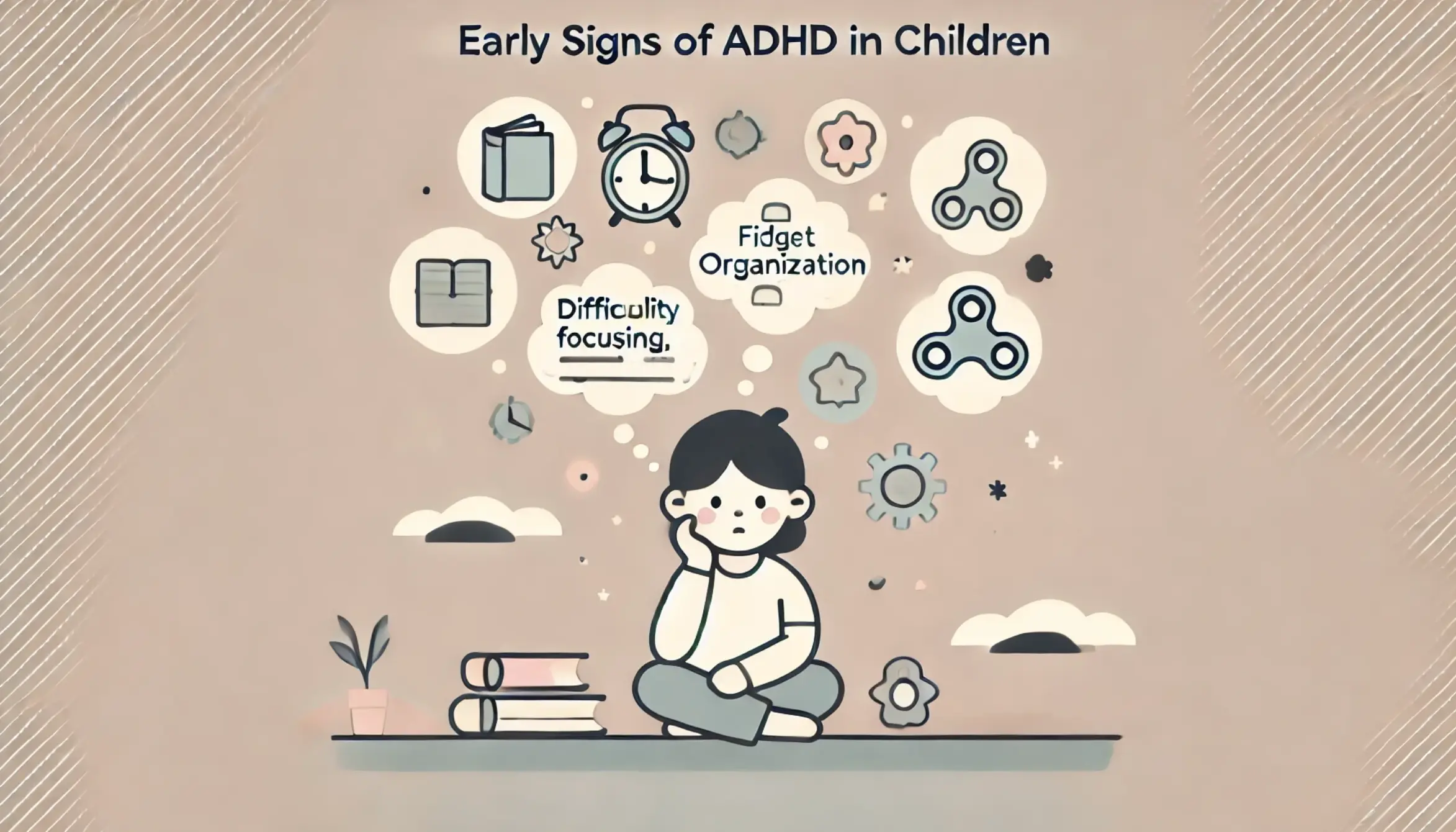Mood disorders cast a long shadow in the intricate web of human emotions, affecting millions worldwide. These conditions, encompassing depression, bipolar disorder, and more, can be profoundly debilitating, impacting one’s emotional well-being and overall quality of life. However, amidst the struggle, there is hope—mood disorder diagnosis serve as beacons of light in this often cloudy landscape.
In this blog, we embark on a journey to explore everything you need to know about mood disorders. Join us as we unravel the mysteries of mood disorders and discover how psychological evaluations for mood disorders can be a vital tool on the path to recovery and well-being.
What Is a Mood Disorder?

Mood disorders are mental health conditions defined by persistent disturbances in a person’s emotional state. These disruptions can significantly impact their daily life, relationships, and overall well-being.
Mood disorders encompass a wide range of conditions, but they generally involve abnormal mood patterns that deviate from the typical emotional fluctuations experienced by individuals.
Mood disorders can significantly impact relationships, work, and quality of life. Their causes are multifactorial, involving genetic, environmental, and neurochemical factors.
Effective treatments such as diagnosis or medication can aid in managing symptoms and improve the lives of individuals with mood disorders. Early diagnosis and intervention are essential to provide the best possible outcomes for those affected by these conditions.
Exploring the Spectrum: A Comprehensive Guide to Mood Disorders
Mood disorders encompass a diverse spectrum of mental health conditions, each characterized by distinct patterns of emotional disturbances. These disorders vary in severity, duration, and specific symptoms, highlighting the importance of accurate testing, diagnosis, and individualized treatment regimens to address the unique challenges posed by each condition.
Here’s an overview of some of the critical mood disorders:
Depression and its Subtypes:
- Major Depressive Disorder (MDD): This is the most prevalent mood disorder, marked by persistent and severe sadness, hopelessness, and a loss of interest in daily activities. It often involves physical symptoms like changes in appetite, sleep disturbances, and concentration difficulties.
- Persistent Depressive Disorder (Dysthymia): Dysthymia is a chronic, milder form of depression characterized by a prolonged low mood, lasting for at least two years, accompanied by similar symptoms to MDD.
Bipolar Disorder and its Subtypes:
- Bipolar I Disorder: Involves mania (elevated mood, high energy) and major depression, with manic episodes lasting at least seven days.
- Bipolar II Disorder: Individuals experience recurrent depressive episodes but alternate with hypomania (a milder form of mania).
Other Mood Disorders:
- Premenstrual Dysphoric Disorder (PMDD): This is a severe form of premenstrual syndrome (PMS) marked by intense mood swings, irritability, and physical symptoms in the days before menstruation.
- Disruptive Mood Dysregulation Disorder (DMDD): Typically diagnosed in children and adolescents, DMDD involves severe temper outbursts disproportionate to the situation and chronic irritability.
Is Anxiety a Mood Disorder?
Anxiety itself is not considered a mood disorder but a distinct mental health condition known as an anxiety disorder. While mood and anxiety disorders can impact an individual’s emotional well-being, their primary symptoms and characteristics differ.
Anxiety disorders are defined by excessive worry, fear, and nervousness, often accompanied by physical symptoms like restlessness, rapid heartbeat, and muscle tension. Common anxiety disorders include generalized anxiety disorder (GAD), panic disorder, social anxiety disorder, and specific phobias.
Mood disorders, however, primarily involve disturbances in a person’s emotional state or mood. These disorders include conditions like major depressive disorder (depression) and bipolar disorder, characterized by persistent and abnormal changes in mood, such as profound sadness or extreme mood swings between depression and mania.
While anxiety and mood disorders can co-occur in some individuals, they are diagnostically distinct and require different approaches to treatment and management.
Who Can Be Affected by Mood Disorders?

Mood disorders can affect individuals across the lifespan, irrespective of age, gender, race, or socioeconomic status. They are among the most prevalent mental health conditions globally, impacting a broad and diverse demographic.
- Children and Adolescents: Mood disorders, such as disruptive mood dysregulation or pediatric bipolar disorder, can affect children and teenagers. Early onset of these conditions can lead to behavioral and emotional challenges during crucial developmental stages.
- Adults: Mood disorders like major depressive disorder and bipolar disorder often first emerge in adulthood. They can disrupt personal relationships, career goals, and overall quality of life.
- Elderly Individuals: Mood disorders, especially depression, can affect older adults, often in conjunction with other health issues. Identifying and addressing these conditions in seniors is crucial, as they can have detrimental effects on physical health and well-being.
- Anyone: Mood disorders don’t discriminate based on gender, race, or socioeconomic background. They can affect anyone, emphasizing the significance of destigmatizing mental health issues and supporting universal access to care for all.
How Common Are Mood Disorders?
Adults suffer from various mood disorders, the most common of which are depression and bipolar disorder. In the US, approximately 7% of adults battle depression, while about 2.8% have bipolar disorder. These figures may vary by country and population but provide a general sense of the prevalence.
Mood disorders are also frequently observed in children and adolescents. Approximately 15% of individuals in this age group experience some form of mood disorder. These disorders can profoundly impact young people’s development and well-being, making early diagnosis and intervention crucial.
It’s important to note that mood disorders can vary in severity, and many cases go undiagnosed or untreated. Promoting mental health awareness, reducing stigma, and ensuring access to mental health services are essential steps in addressing the prevalence of mood disorders and improving the lives of those affected.
Understanding the Causes of Mood Disorders
Understanding the causes of mood disorders is a complex and ongoing process, as these conditions arise from biological, psychological, and environmental factors. Understanding these multifaceted causes is crucial for early detection, effective treatment, and developing preventive strategies for mood disorders. A comprehensive approach considering biological and psychosocial factors is essential in addressing these complex conditions.
Here are key aspects of their causation:
- Biological Factors: Genetics plays a significant role. Individuals with a family history of mood disorders are at a higher risk. Neurochemical imbalances, particularly serotonin and dopamine, can contribute to mood disturbances.
- Brain Structure and Function: Structural and functional differences in the brain, especially the areas responsible for mood regulation, can be linked to mood ailments. For instance, abnormalities in the amygdala and prefrontal cortex abnormalities correlate with depression and bipolar disorder.
- Psychological Factors: Trauma, chronic stress, and personality traits can contribute to mood disorders. Negative thought patterns and low self-esteem often play a role in the development and persistence of these conditions.
- Environmental Factors: Life events, such as loss, trauma, or significant changes, can trigger mood disorders. Additionally, a lack of social support or access to mental healthcare may exacerbate symptoms.
- Medical Conditions: Certain conditions, like thyroid disorders or chronic illnesses, can mimic or worsen mood disorder symptoms.
How Are Mood Disorders Identified?

Diagnosing mood disorders requires careful assessment by mental health professionals, such as psychologists, psychiatrists, or clinical social workers. The diagnostic process typically involves several key steps:
- Clinical Interview: A mental health expert will conduct an interview or survey with the individual, asking detailed questions about their symptoms, emotional experiences, and behavioral patterns. They will inquire about mood fluctuations, sleep disturbances, appetite changes, and other relevant factors.
- Diagnostic Criteria: A mental health professional will refer to recognized diagnostic criteria, such as those stated in the Diagnostic and Statistical Manual of Mental Disorders (DSM-5), to assess if the individual’s symptoms correspond with a specific mood disorder.
- Medical Assessment: Mood disorder symptoms can be linked to underlying medical conditions or medications. An in-depth medical evaluation may be required to rule out any physical reasons for the symptoms.
- Psychological Assessment: Psychological tests and assessments help gather additional information about the individual’s emotional state, thought processes, and functioning.
- Observation: The professional will observe the individual’s behavior and emotional expressions during the assessment to gain insights into their mood disorder.
- Collateral Information: Information from family members, friends, or other sources may be considered to provide a more comprehensive view of the individual’s condition.
- Medical History: Most mood disorders are highly heritable. Most mood ailments are a combination of genetic as well as environmental factors. Therefore, exploring paternal and maternal family health history can be beneficial.
Mood Disorder Diagnosis in the Bay Area
Mood disorders are complex conditions that require thorough assessment and diagnosis by qualified mental health professionals. Understanding these disorders’ underlying causes and symptoms is essential for effective treatment and support. If you or a loved one in the Bay Area is suspected of having a mood disorder, seek help from experts who specialize in psychological testing for mood disorders.
Consider contacting APS Psychological Testing for a comprehensive evaluation and personalized treatment plan. Do not hesitate to reach out and take the first step towards better mental health and well-being. Your journey to recovery begins with seeking proper professional guidance.





